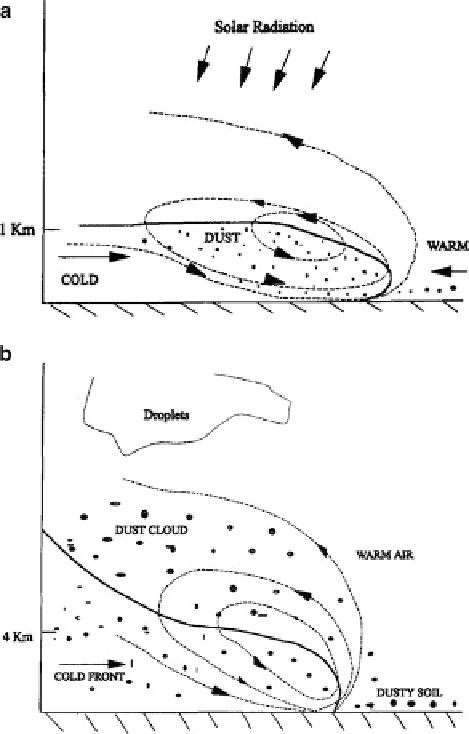Geoscience Reference
In-Depth Information
Fig. 6.5
Schematic depiction
of the vertical structure of
different types of
dust-generating cold fronts
(Fig. 1 from Smirnov et al.
1993
)
6.4
Moist Convection
Evaporationally driven, cold near-surface outflow from moist convection frequently
causes dust storms. These range in scale from weak events caused by individual
precipitating clouds to outflows from mesoscale convective systems that span
hundreds of kilometers. This type of storm is very prominent during the pre-
monsoon season, when convective instability is building through an increase in
low-level moisture, but when soils are still dry. In addition, dry air at midlevels
allows for strong evaporation and downdrafts (Marsham et al.
2008a
). In fact, in
some of these systems, evaporation is so large that very little or no precipitation is
observed at the ground. Convective cold pool-related dust storms belong to the most
dramatic of their kind, creating moving “walls of dust” and very sharp increases
in wind speed and particle concentrations. As the cold pools behave like density

Search WWH ::

Custom Search